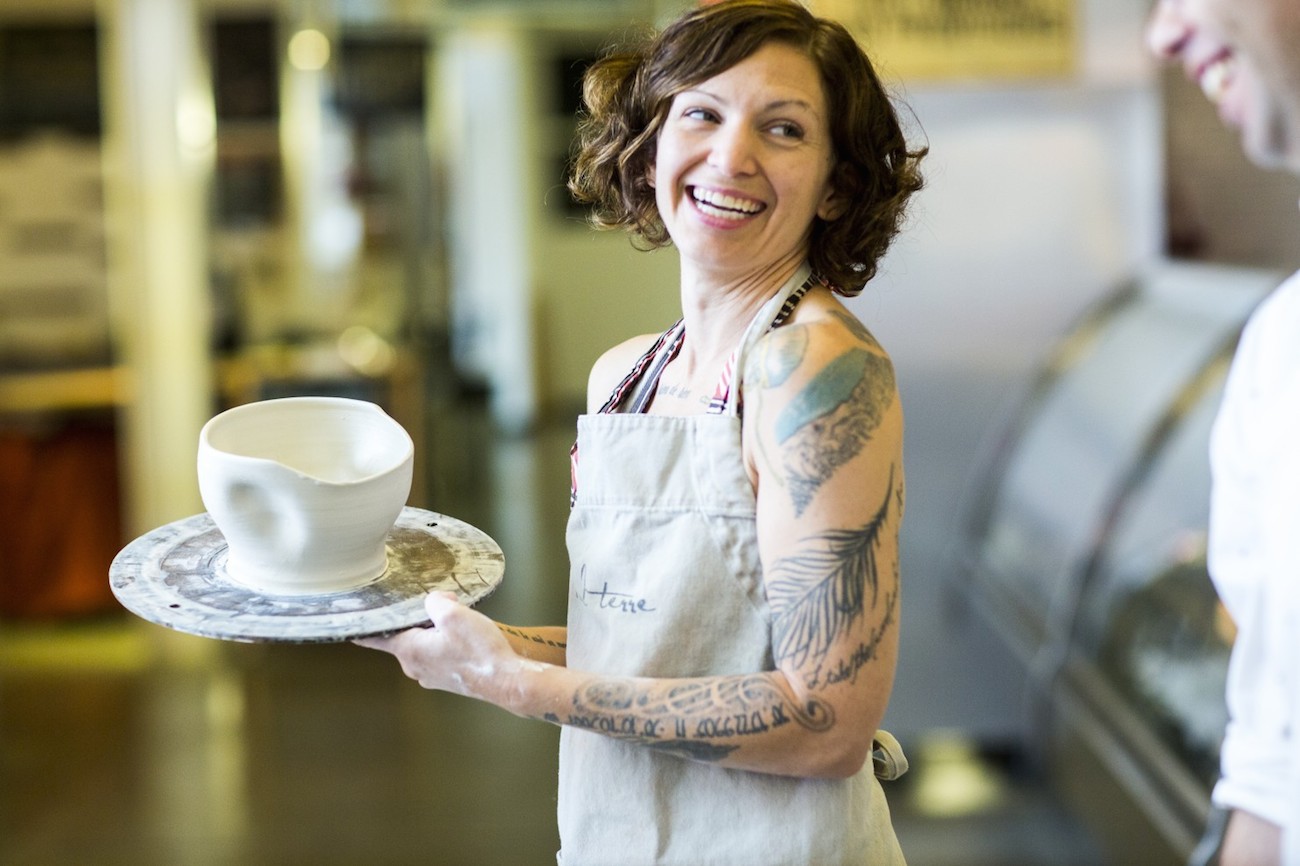Ceramics have been taking up column inches in the trend sections of major newspapers lately. Last month we had the New York Times talking about the “white hot” (a curious title that we still haven’t figured out; maybe there’s nothing to get) studio ceramics trend in NYC. Recently, the Times were joined by the Washington Post, which ran an article about restaurants that try to set themselves apart by commissioning their own ceramic tableware.
Above image: Amber Kendrick, owner of Cloud Terre Design. Photograph by April Greer for the Post.
If you’re like an increasing number of eateries, you commission and even help design custom serving pieces and tableware.
In other words, for some chefs and restaurateurs, plain old white dishes just aren’t cutting it anymore, especially at a time when pictures of their food are being snapped by Yelpers, Instagrammers and professional photographers.
“The food is obviously the star of the show, but to eat food off of someone’s artwork really gives it life,” said Tarver King, who has collaborated with Arlington-based design studio Cloud Terre at both his current job at the Restaurant at Patowmack Farm in Lovettsville, Va., and his previous gig at the Ashby Inn in Paris, Va.

A Cloud Terre plate at Patowmack Farm. Photograph by Scott Suchman for the Post.
The trend is partly to enhance the experience surrounding food. Something else, let’s call it novelty for want of a better word, is also in play.
In Chicago, modernist chef Grant Achatz has been partnering for years with designer Martin Kastner for pieces at his restaurant Alinea and bar Aviary. They include a bud vase that doubles as a chopstick rest and a hand-blown glass tumbler that can spin in circles on the table (it looks kind of like a toppled dreidl).
The Post mentions Instagram and food photographers. Some of the quirky designs we’ve seen seem to be chasing the dragon of social media buzz. A few months ago the Catit restaurant in Tel Aviv hung a lamp on that idea by commissioning tableware that was specifically for food photography. In light of what we’ve read in the Post, Catit’s tableware seems more like a satirical comment about gimmicks in fine dining. For now we’ll support our friends in the field and withhold criticism until five-star restaurants start installing ball pits.
Love contemporary ceramic art? Let us know in the comments.

A Cloud Terre plate at Patowmack Farm. Photograph by Deb Lindsey for the Washington Post.

I don’t see the issue. It’s not difficult to make food safe glazes.
As an ex-chef who became a potter I love the idea of food and ceramics having a symbiotic relationship, both look better if designed at the same time.
Love to see more articles of how this works in different countries and cultures.
Many of the top restaurants here in New Zealand have been using dishes by local potters for a few years now. Personally (as a ceramicists) I question the food safety, having a pretty good idea whats in some of the glazes. I think many potters do it for the attention it gives their profile irrespective of the profitability long term.
Making pottery for restaurants might be lucrative for a potter but following all the rules set up by government agencies concerned with food safety would be so difficult that it is not worth it. Restaurants also want lower prices than are profitable.
Some 20 years ago Napa Valley College did a workshop combining clay, wine and cuisine. The internationally known chef met with a well known potter months ahead to discuss the food and tableware. The actual event was held in a Napa Winery, previewed by a panel of a food writer, a fine foods grocer, a Japanese tea ceremony expert, and a sommelier from the winery. The idea came from the Japanese emphasis on specific dishes for specific foods. The chef was trained in France, but had worked in Hong Kong and Osaka. He told us of a restaurant in Japan which served everything on pieces from museums, and one had to be invited to eat there – and pay an astronomical price for the privilege!
I have made tableware for several restaurants in London, including the Royal Albert Hall cafe bar and Nobu Berkeley Street. For restaurants, the tableware must be very durable, so stoneware or porcelain is preferable, and rims must be rounded, not sharp, to avoid chipping. Glazes must be durable, scratch resistant and not crazed, to avoid breakages. Potters must be prepared to continue supplying tableware for a number of years. In my experience, everything needs replacing after around 18 months.